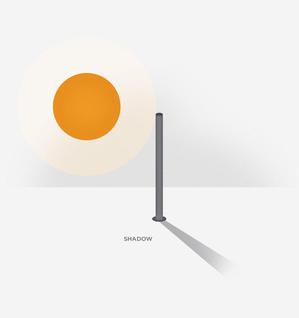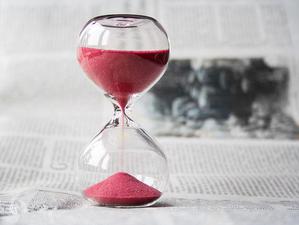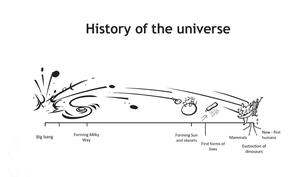Glossary term: 時間
Description: 我們每個人對時間都有一個基本的概念:從過去到現在,再到未來,事件一個接一個地發生。然而,時間並不是看得見、聽得到、聞得到、摸得到或嘗得到的東西。不過,它是可以測量的,而這正是時間在天文學和物理學中的重要性所在。
我們測量時間的方法是,將正在發生的事情的持續時間與時鐘上測量的持續時間進行比較,或者,對於較長的時間,與日曆上測量的持續時間進行比較。傳統上,這種時間測量是以地球自轉為基礎的。地球自轉一圈所需的時間(根據太陽的位置判斷)就是一天的長度。通常的會講一天分為 24 小時,每小時分為 60 分鐘,每分鐘分為 60 秒,這提供了額外的時間單位。
自 1967 年起,時間的定義改用銫-133 原子鐘測量的一秒時間("SI 秒")。在此基礎上定義了幾種時間系統,特別是世界時間(UTC),它被用於全世界的官方計時;還有所謂的儒略日及其變體,它是天文學中使用的一種連續計數天數的方法。
愛因斯坦的狹義相對論和廣義相對論表明,時鐘上流逝的時間既取決於時鐘的運動,也取決於重力的影響。這些相對論效應需要在高精度的時間測量中加以考慮,例如使用全球定位系統(GPS)衛星進行的測量。
Related Terms:
See this term in other languages
Term and definition status: The original definition of this term in English have been approved by a research astronomer and a teacher The translation of this term and its definition is still awaiting approval
This is an automated transliteration of the simplified Chinese translation of this term
The OAE Multilingual Glossary is a project of the IAU Office of Astronomy for Education (OAE) in collaboration with the IAU Office of Astronomy Outreach (OAO). The terms and definitions were chosen, written and reviewed by a collective effort from the OAE, the OAE Centers and Nodes, the OAE National Astronomy Education Coordinators (NAECs) and other volunteers. You can find a full list of credits here. All glossary terms and their definitions are released under a Creative Commons CC BY-4.0 license and should be credited to "IAU OAE".
If you notice a factual or translation error in this glossary term or definition then please get in touch.
Related Activities
Sun’s Shadow
astroEDU educational activity (links to astroEDU website) Description: Why is the Sun's shadow so important?
License: CC-BY-4.0 Creative Commons 姓名標示 4.0 國際 (CC BY 4.0) icons
Tags:
Hands-on
, Shadows
Age Ranges:
6-8
, 8-10
, 10-12
, 12-14
, 14-16
Education Level:
Informal
, Middle School
, Primary
, Secondary
Areas of Learning:
Observation based
, Social Research
Costs:
Medium Cost
Duration:
1 day
Group Size:
Group
Skills:
Asking questions
, Communicating information
, Constructing explanations
, Engaging in argument from evidence
Day and Night in the World
astroEDU educational activity (links to astroEDU website) Description: Compare diurnal and nocturnal animals and experiment with day and night.
License: CC-BY-4.0 Creative Commons 姓名標示 4.0 國際 (CC BY 4.0) icons
Tags:
Life
, Model
, Animals
, Day and night
Age Ranges:
6-8
, 8-10
Education Level:
Primary
Areas of Learning:
Interactive Lecture
, Modelling
, Social Research
Costs:
Low Cost
Duration:
1 hour
Group Size:
Group
Skills:
Asking questions
, Constructing explanations
, Developing and using models
, Planning and carrying out investigations
What Is Time?
astroEDU educational activity (links to astroEDU website) Description: Build an hourglass to understand what time is and how it can be measured.
License: CC-BY-4.0 Creative Commons 姓名標示 4.0 國際 (CC BY 4.0) icons
Tags:
Hands-on
, Measurement
, Day and night
, Measure
, Instruments
Age Ranges:
6-8
, 8-10
, 10-12
Education Level:
Middle School
, Primary
Areas of Learning:
Modelling
, Problem-solving
, Social Research
Costs:
Medium Cost
Duration:
1 hour
Group Size:
Group
Skills:
Asking questions
, Developing and using models
, Planning and carrying out investigations
Making a Sundial
astroEDU educational activity (links to astroEDU website) Description: Build a sundial and discover how time can be measured.
License: CC-BY-4.0 Creative Commons 姓名標示 4.0 國際 (CC BY 4.0) icons
Tags:
Hands-on
, Measurement
, Measure
, History
, Clocks
Age Ranges:
6-8
, 8-10
, 10-12
Education Level:
Middle School
, Primary
Areas of Learning:
Modelling
, Observation based
, Social Research
Costs:
Medium Cost
Duration:
1 hour
Group Size:
Group
Skills:
Analysing and interpreting data
, Asking questions
, Communicating information
, Developing and using models
History of the Universe
astroEDU educational activity (links to astroEDU website) Description: Build a timeline of the all Universe!
License: CC-BY-4.0 Creative Commons 姓名標示 4.0 國際 (CC BY 4.0) icons
Tags:
History
, Timeline
, Mathematics
, Humans
Age Ranges:
8-10
, 10-12
, 12-14
Education Level:
Middle School
, Primary
Areas of Learning:
Problem-solving
, Social Research
Costs:
Low Cost
Duration:
1 hour 30 mins
Group Size:
Group
Skills:
Asking questions
, Communicating information
, Developing and using models
, Using mathematics and computational thinking













